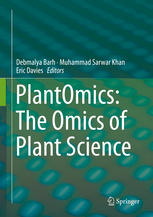

Most ebook files are in PDF format, so you can easily read them using various software such as Foxit Reader or directly on the Google Chrome browser.
Some ebook files are released by publishers in other formats such as .awz, .mobi, .epub, .fb2, etc. You may need to install specific software to read these formats on mobile/PC, such as Calibre.
Please read the tutorial at this link: https://ebookbell.com/faq
We offer FREE conversion to the popular formats you request; however, this may take some time. Therefore, right after payment, please email us, and we will try to provide the service as quickly as possible.
For some exceptional file formats or broken links (if any), please refrain from opening any disputes. Instead, email us first, and we will try to assist within a maximum of 6 hours.
EbookBell Team

4.3
98 reviewsPlantOmics: The Omics of Plant Science provides a comprehensive account of the latest trends and developments of omicstechnologies or approaches and their applications in plant science. Thirty chapters written by 90 experts from 15 countries are included in this state-of-the-art book. Each chapter describes one topic/omics such as: omics in model plants, spectroscopy for plants, next generation sequencing, functional genomics, cyto-metagenomics, epigenomics, miRNAomics, proteomics, metabolomics, glycomics, lipidomics, secretomics, phenomics, cytomics, physiomics, signalomics, thiolomics, organelle omics, micro morphomics, microbiomics, cryobionomics, nanotechnology, pharmacogenomics, and computational systems biology for plants. It provides up to date information, technologies, and their applications that can be adopted and applied easily for deeper understanding plant biology and therefore will be helpful in developing the strategy for generating cost-effective superior plants for various purposes. In the last chapter, the editors have proposed several new areas in plant omics that may be explored in order to develop an integrated meta-omics strategy to ensure the world and earth’s health and related issues. This book will be a valuable resource to students and researchers in the field of cutting-edge plant omics.